Autism Spectrum Disorder (also known as autism) and Intellectual disability (ID), are neurodevelopmental disorders (NDDs) with lifelong consequences for care and support. However, only a fraction of children with autism and intellectual disability can access services due to gaps in diagnosis and treatments in most places. Moreover, low awareness levels and stigma related to disability interfere with help-seeking behaviour in South Asian countries.
In response, Neurodevelopment and Autism in South Asia Treatment and Evidence (NAMASTE) is a 5-year program that aims to implement a detection-care pathway to facilitate the process of early detection and early access to care services. Within existing health and care systems, NAMASTE aims to engage non-specialist health and care workers (NHCWs) for detection and intervention delivery in 4 South Asian districts: North Goa and East Delhi Districts in India, Kathmandu in Nepal, and Colombo in Sri Lanka. To facilitate timely screening and early detection, the community engagement and involvement (CEI) workstream within NAMASTE was tasked to co-design a Community Engagement and Awareness Toolkit. Quicksand, the design partner, created a guide to ensure the materials could be culturally relevant for all four sites. The toolkit aimed to create multi-media tools to support caregivers’ journey across the detection care pathway. Thus, the objectives of our research were:
- To understand the informational needs and necessary awareness-building activities related to the detection and care of neurodevelopmental disorders (NDDs) among caregivers, autistic adults, and specialist and non-specialist health and care workers (NHCWs).
- To identify media preferences for presenting these informational needs, keeping in mind content and features that could effectively deliver awareness messages and information throughout their caregiving journey.
The toolkit was built by employing participatory research methods across two phases. Throughout the research process, a community advisory board (CAB) comprised parent advocates and lived experience experts who provided oversight and supervision.
Phase I
In phase I, participants included autistic adults, caregivers of children with autism, and other NDDs and care providers. In-depth interviews (IDIs) and co-design workshops were used to understand the participants’ context and unique experiences navigating the healthcare systems as care providers and receivers. Additionally, understanding barriers and facilitators to information and knowledge helped to curate information needed across screening and detection, post-detection, intervention, and post-intervention. Responses elicited helped to gather and understand the information required at different points in the caregiver journey.
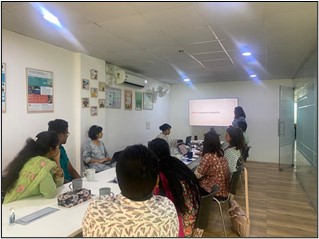
Phase II
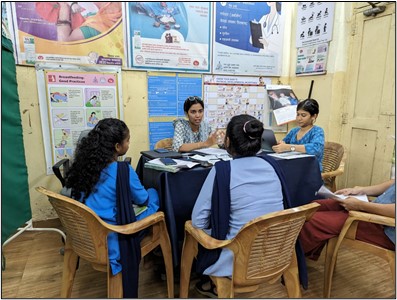
After understanding participants’ information needs, it was essential to understand participants’ preferences for design, language, media formats, delivery channels, and key messages. Through co-design workshops and one-on-one interviews, stakeholders, including caregivers, care providers, specialists and non-specialists, and parents of children without any neurodevelopmental delays, informed the toolkit design.
In total, 185 research participants across the sites were involved. Participants received honoraria towards their time. Considering the lived experience of those involved, safety and support were emphasised to build inclusivity. The following measures were adopted while involving neurodivergent individuals in the research:
- Sharing preparatory documents such as interview questions and a programme concept note before research activities
- Offering a choice of meetings in person or online,
- Offering the option to request relevant accommodations, like the use of Augmentative and Alternative Communication (AAC) Devices and the presence of a supportive person,
- Option of a written interview
Key Findings and Learnings
The final version of the community engagement toolkit consists of nine multi-media tools, which were linguistically adapted for each site, and graphics were designed to be culturally relevant to each site. Each tool has been designed and developed with the end user in mind, to support caregivers in seeking help for their child and the NHCWs to provide services to families (Figure 1).

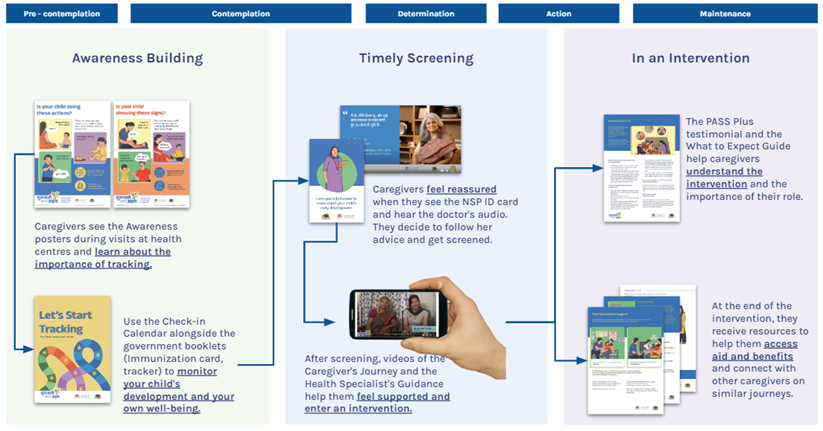
Figure 1: Tools to be used at different time points in caregivers’ journey
Table 1: Description of each tool developed in the community engagement toolkit
|
Sr.no. |
Community Engagement Material |
Description of the tool |
|
1. |
Awareness Posters |
The awareness posters will be placed in Community health centres, immunization clinics, dispensaries, and other public setups to spread awareness about early childhood developmental milestones. |
|
2. |
Child development milestone calendar |
The child development milestone calendar is an interactive tool for families with children under the age of 2 years. It promotes tracking of developmental milestones during the early years and use of government issued immunisation cards. |
|
3. |
Training card |
A training card has been designed for Non-Specialist Health & Care Workers to carry when they go for screenings which highlights that they have received training in early child development screening. |
|
4. |
Pre-screening health specialist audio |
It is an audio highlighting that Non-Speaciaist Health and Care Workers are trained to recognize childhood development delays at the time of conducting detection in communities. |
|
5. |
Post-screening health specialist video |
A video of a health specialist explaining the benefits of seeking services timely and guiding parents to take appropriate measures for their child’s developmental journey will be shared with parents before they enrol in interventions. |
|
6. |
Post-screening caregiver story video |
A video of caregivers with children with developmental delays, who have received services from public health sector will be shared with parents to provide them with a sense of support and inform that they are not alone in this journey and there are several parents just like them. |
|
7. |
Intervention information flyer |
The WHO CST and PASS Plus information flyer contains information about the intervention and what a family can expect by enrolling in this intervention. Each family would be given this flyer in a folder during the first session of the intervention. |
|
8. |
PASS Plus intervention testimonial video |
A testimonial video of the PASS Plus intervention has been created which will be shared with the families, upon entering the intervention. In the video, a caregiver is talking about their experience with the intervention and how it has helped them in understanding their child’s needs better and provide him with adequate support. |
|
9. |
Post intervention resource flyer |
The Post Intervention flyer will be given to the families after they have completed the intervention. The flyer consists of information regarding government hospitals, availing disability card and other benefits, self-care tips for parents and support group information has been mentioned in the flyer. |
The social perceptions of NDDs are primarily shaped by the cultural contexts and practices at each site. While there were some similarities and unique characteristics simultaneously across sites, the prevalence of stigma and related myths was pervasive. The tools aim to support awareness building in the community, encourage timely screening, and enrolment into an intervention. For example, in collectivist culture, many families live together, and relatives beyond parents help in raising children. Families often trust the advice of elders instead of their own wisdom and experiences. Hence, understanding these practices was essential to sharing accurate information and recognizing individuals in the community to deliver critical messages that can help gain the community's trust. Therefore, building the toolkit emphasized early reflection to make materials more inclusive. This meant inclusion of reflection from phase 1 to phase 2, ensuring perspectives of diverse caregivers such as fathers, grandmothers, local language speakers, and caregivers of children with other NDDs like intellectual disability are included.
The NAMASTE programme is being implemented in districts where there are existing government protocols tracking child development. For example, in India, as per the Anganwadi Protocol for Divyang Children, community health workers should be involved in screening children for developmental delays (The Hindu Bureau, 2023). In this regard, NAMASTE’s community engagement toolkit, alongside the implementation of its detection care pathway, is an aid that helps them build awareness and facilitate their work.
Another key learning was to disseminate the materials in one's context and translate tools into colloquial and context-specific language with visual aids to support anyone and everyone in gaining knowledge about NDDs. Considerations included having a conversational and upbeat tone with content that directly spoke to family members and using short sentences with simple words that were easy to understand.
Additionally, the participatory approach has helped us understand the unique information needs and barriers to these needs. Furthermore, community-engaged research is helpful in identifying the unique social and physical environments of the final beneficiaries to create something based on the people's priorities and with the people (Task Force on the Principles of Community Engagement, 2011).
Way forward
The community engagement toolkit is being implemented in 4 sites of the NAMASTE programme alongside training for community healthcare workers to identify neurodevelopmental delays in the community. During these training the community healthcare workers are also being trained on how they can use these materials while screening children in their area. Further research is needed to evaluate the usefulness of the toolkit as it is implemented at all sites and understand the challenges that may come.
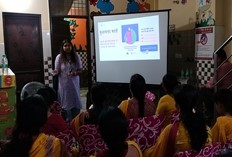
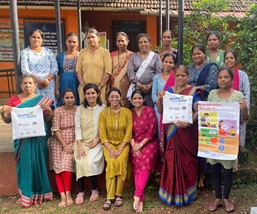
Image: Use of community awareness materials in East Delhi and North Goa
References
- Bhavnani, S., Lockwood Estrin, G., Arora, R. et al. “I was Confused … and Still am” Barriers Impacting the Help-Seeking Pathway for an Autism Diagnosis in Urban North India: A Mixed Methods Study. J Autism Dev Disord 52, 1778–1788 (2022). https://doi.org/10.1007/s10803-021-05047-z
- Clinical and Translational Science Awards Consortium, Community Engagement Key Function Committee., Task Force on the Principles of Community Engagement. (2011). Principles of community engagement
- The Hindu Bureau. (2023, November 28). New protocol for Non-Specialised Health & Care Workers to track children with disabilities. The Hindu. https://www.thehindu.com/news/national/new-protocol-for-anganwadi-workers-to-track-children-with-disabilities/article67583487.ece
- Turnock, A., Langley, K., & Jones, C. R. G. (2022). Understanding Stigma in Autism: A Narrative Review and Theoretical Model. Autism in adulthood: challenges and management, 4(1), 76–91. https://doi.org/10.1089/aut.2021.0005
- Yardley, L., Morrison, L., Bradbury, K., & Muller, I. (2015). The person-based approach to intervention development: Application to digital health-related behavior change interventions. Journal of Medical Internet Research, 17(1), e30. https://doi.org/10.2196/jmir.4055
Acknowledgements
We gratefully acknowledge the contributions from 22 members of the Community Advisory Board across all phases of the project. We are also grateful to the 185 research participants who shared their valuable time and their experiences with us, without whom this project would not have been possible. This project would not be complete without the efforts of various other members of our team at Sangath, Quicksand Design Studio, AutismCare Nepal Society, Sri Lanka College of Paediatricians and University of Manchester. This research was funded by the NIHR (NIHR134702) using UK international development funding from the UK Government to support global health research. The views expressed in this publication are those of the author(s) and not necessarily those of the NIHR or the UK government.
